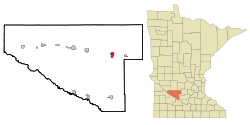
Ham Lake is a city in Anoka County, Minnesota, United States. It is a suburb in the Minneapolis–Saint Paul metropolitan area. The population was 15,296 at the 2010 census. It is in the Anoka-Hennepin School District, one of Minnesota's largest school districts.

St. Clair or Saint Clair is a city in Blue Earth County, Minnesota, United States, located along the Le Sueur River. The population was 750 at the 2020 census. It is part of the Mankato-North Mankato Metropolitan Statistical Area.
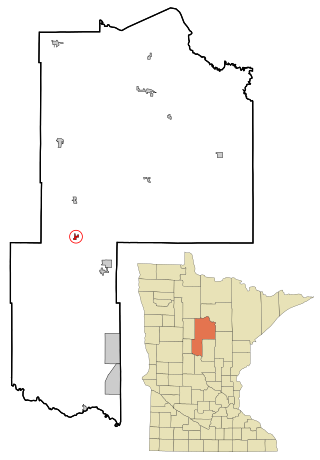
Backus is a city in Cass County, Minnesota, United States. The population was 262 at the 2020 census. It is part of the Brainerd Micropolitan Statistical Area.

Clara City is a city in Chippewa County, Minnesota, United States. The population was 1,423 at the 2020 census.

Brandon is a city in Douglas County, Minnesota, United States. The population was 501 at the 2020 census.

Bricelyn is a city in Faribault County, Minnesota, United States. The population was 365 at the 2010 census.
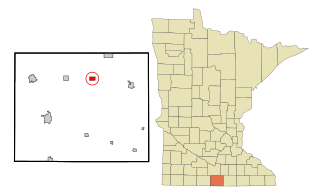
Easton is a city in Faribault County, Minnesota, United States. The population was 199 at the 2010 census.

Wells is a city in Faribault County, Minnesota, United States. The population was 2,343 at the 2010 census.
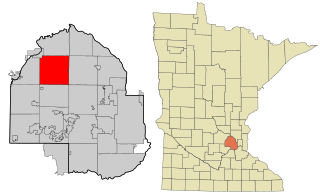
Corcoran is a rural city in Hennepin County, Minnesota, United States. The population was 5,379 at the 2010 census.

Greenwood is a community on Saint Albans Bay on Lake Minnetonka in Hennepin County, Minnesota, United States just northeast of the community of Excelsior, Minnesota. The population was 688 at the 2010 census.

Caledonia is a city and the county seat of Houston County, Minnesota, United States and is part of the La Crosse, Wisconsin Metropolitan Statistical Area. The population was 2,847 at the 2020 census.

Cleveland is a city in Le Sueur County, Minnesota, United States. The population was 719 at the 2010 census and 747 at the 2020 census.

Courtland is a city in Nicollet County, Minnesota, United States. The population was 734 at the 2020 census. It is part of the Mankato-North Mankato Metropolitan Statistical Area.

Oronoco is a city in Olmsted County, Minnesota, United States, along the Middle Fork of the Zumbro River. The population was 1,802 at the 2020 census.
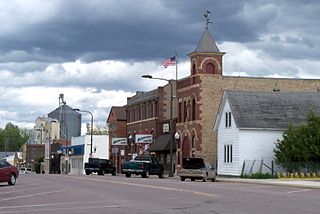
Arlington is a city in Sibley County, Minnesota, United States. The population was 2,233 at the 2010 census.

Hancock is a city in Stevens County, Minnesota, United States. The population was 863 at the 2020 census.

Paynesville is a city in Stearns County, Minnesota, United States, on Lake Koronis, in the central part of the state. The population was 2,388 at the 2020 census. It is part of the St. Cloud Metropolitan Statistical Area.

Butterfield is a city in Watonwan County, Minnesota, United States. The population was 601 at the 2020 census.

Comfrey is a city in Brown and Cottonwood counties in the U.S. state of Minnesota. The population was 392 at the 2020 census. The majority of the people live in Brown County.

Brooten is a city in Stearns and Pope counties in the U.S. state of Minnesota, United States. The population was 626 as of the 2020 census. Almost the entire city is within Stearns County, with a small portion in Pope County.
